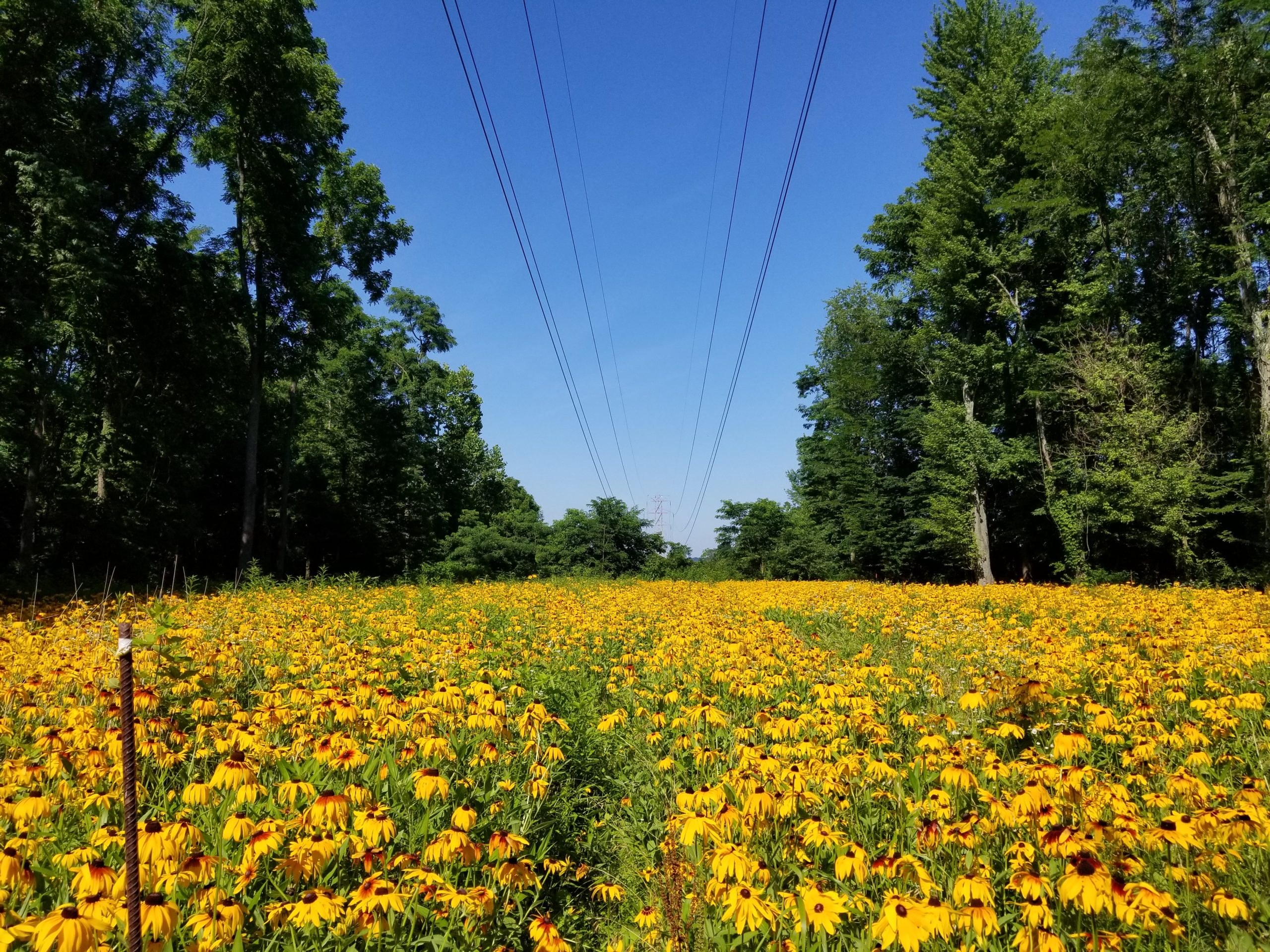A New Home on the Prairie for Birds, Bees, and Butterflies

Above photo: Prairie species planted on a right-of-way in the service territory of American Electric Power. Photo courtesy of Shana Byrd, The Dawes Arboretum.
In field tests in Ohio, EPRI, American Electric Power (AEP), and the Dawes Arboretum demonstrated the establishment of biodiverse prairie habitat along a transmission right-of-way.
To maintain reliability along power line corridors, utilities must plant and manage vegetation, control erosion, and trim or remove trees that encroach on grid equipment. Typically, corridors are dominated by non-native grasses and weedy species, which offer poor habitat for native wildlife and require regular tree removal, mowing, and herbicide treatments.
Native prairie grasses and flowers offer a much lower maintenance alternative for some regions with the potential to inhibit tree growth, control erosion, tolerate drought, and increase biodiversity. While native grass seeds generally cost more, they require no fertilizer, reducing overall costs. Establishing native prairie vegetation can yield savings over time by reducing the need for herbicides and mowing.
In the spring of 2017, AEP and EPRI planted native prairie species in six test plots along a transmission right-of-way through forest and farmland. Vegetation successfully established within four weeks. In the first year of monitoring, researchers observed no erosion and documented rich biodiversity: 21 bird species, 9 bee species, and 9 butterfly species. Over the next few years, they will monitor various aspects of the plots, including habitat quality, erosion control, species longevity, and tree growth. Reduced herbicide treatments could yield up to 50% savings in vegetation management costs over 20 years.
Key EPRI Technical Experts:
John Acklen
For more information, contact techexpert@eprijournal.com.

